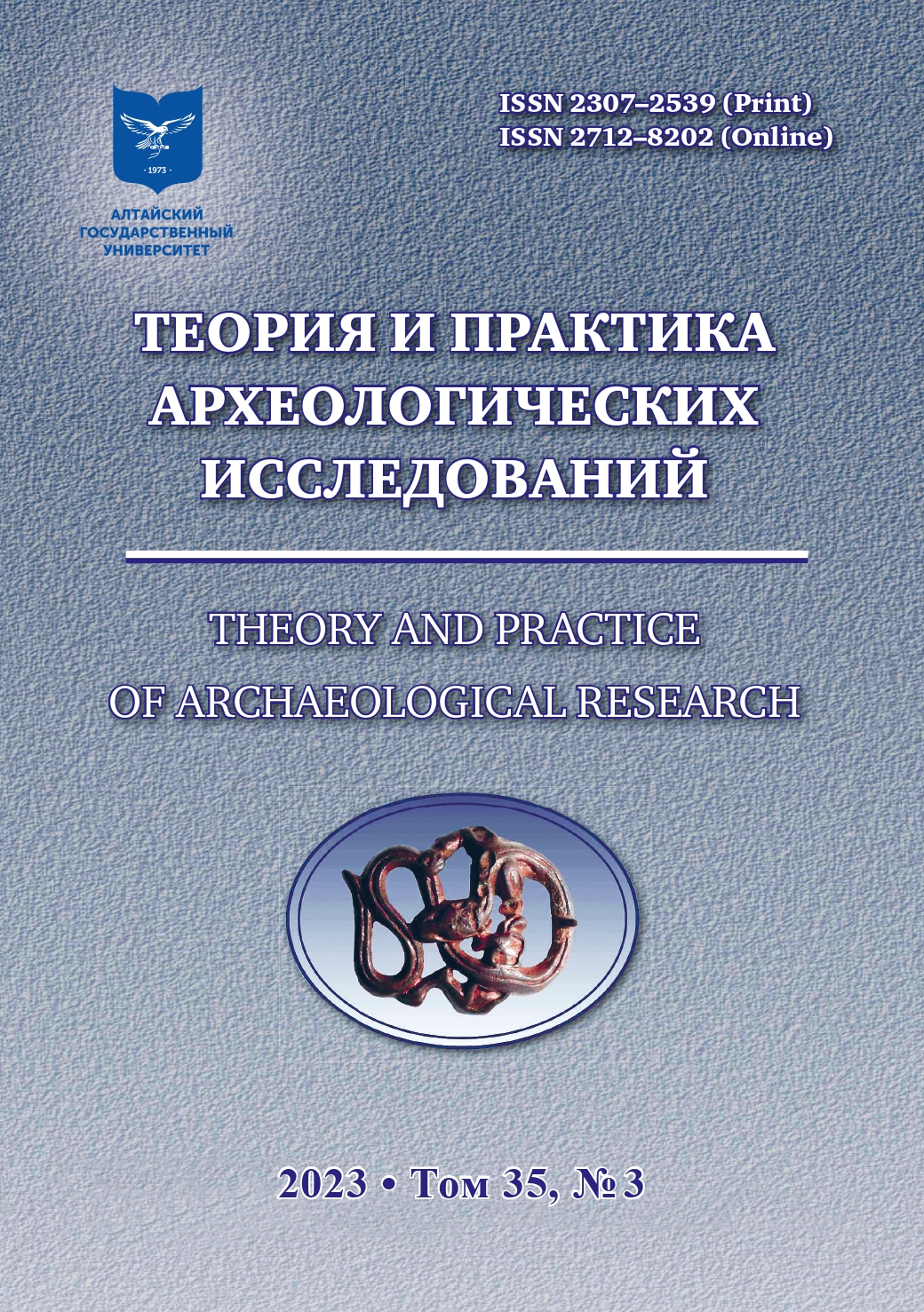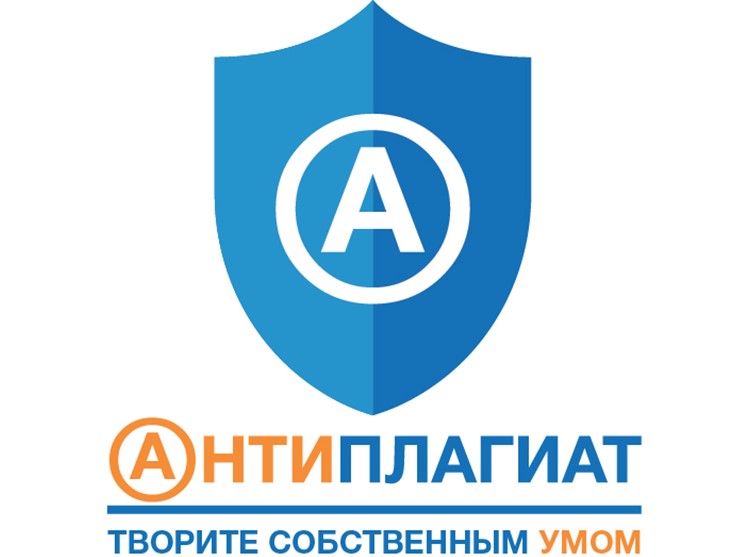СЫРОДУТНЫЙ ПРОЦЕСС КАК ОСНОВА ДРЕВНЕЙ МЕТАЛЛУРГИИ
Аннотация
В настоящее время хорошо известны принципы прямого восстановления железа, господствовавшего в металлургии на протяжении более трех тысячелетий. Однако далеко не всегда удается удачно провести экспериментальное моделирование сыродутного процесса. Нами было проведено 35 экспериментальных плавок. В качестве прототипа пиротехнического сооружения выбран полностью сохранившийся сыродутный горн, раскопанный на поселении Колесовка-4. В результате экспериментов установлено, что при обжиге руды происходило не только выгорание органических примесей, но и уменьшалась концентрация кремнезема и глинозема, и таким образом увеличивалось содержание окиси железа. Существенное значение имеет дробление руды. Можно со всей определенностью утверждать, что теоретических знаний недостаточно для осуществления успешного процесса получения железа сыродутным способом.
Скачивания
Metrics
No metrics found.
Литература
Afanasyev G.E., Nikolaenko A.G. To the Question of the Saltovo Type Bloomery Furnace. Sovetskaya arkheologiya = Soviet Archaeology. 1982;2:168–175. (In Russ.)
Baykov A.A. Physical and Chemical Bases of Methods of Direct Reduction of Iron from Ores. In: Collection of Works. Vol. II. Moscow; Leningrad : Akademiya Nauk SSSR, 1948. P. 356–381. (In Russ.)
Braychevskaya A.T. Ironmaking Furnace in Novaya Pokrovka. Kratkie soobshcheniya Instituta arheologii USSR = Brief Communications of the Institute of Archaeology of USSR. 1956;6:64–67. (In Russ.)
Bulankin V.M. The Report about Archaeological Exploration in the Ryazan District in 2008. Scientific Archive of the Ryazan Historical and Architectural Museum and Reserve. 2009. №3991. (In Russ.)
Bulankin V.M., Zavyalov V.I., Ivanov D.A. Settlement Istye-2 — Raw Material Base of Staraya Ryazan. In: The Archaeology of the Moscow Region. No 8. Moscow : IA RAN, 2012. P. 166–174. (In Russ.)
Voyloshnikov V.D., Voyloshnikova N.A. Mineral Resources of the Ryazan Region and the Problem of Their Study. In: Ryazan Region. History. Nature. Economy (to the 900th anniversary of the city of Ryazan). Ryazan : Ryazanskoe otdelenie Sovetskogo fonda kul’tury, 1991. P. 194–207. (In Russ.)
Gurin M.F. The Ancient Iron of the Byelorussian Dnieper Region. Minsk : Nauka i tehnika, 1982. 126 p. (In Russ.)
Gurin M.F. The Blacksmith’s Craft in Polock Land 9th –13th cc. Minsk : Nauka i tehnika, 1987. 151 p. (In Russ.)
Zavyalov V.I., Terekhova N.N. Blacksmith’s Craft of the Ryazan Principality. Moscow : IA RAN, 2013. 272 p. (In Russ.)
Ivanov D.A. Nozzles from Russian Production Settlement Istye-2. In: The Archaeology of the Moscow Region. No 13. Moscow : IA RAN, 2017. P. 88–98. (In Russ.)
Ivanov D.A., Strikalov I.Yu., Chelyapov V.P. Settlement Structures in the Rivers Pronya and Ranova interfluve. In: Great Principality of Ryazan. Moscow : Pamyatniki istoricheskoj mysli, 2005. P. 336–360. (In Russ.)
Kolchin B.A., Krug O.Yu. Physical Modeling of the Bloomer Process. In: Archeology and natural sciences. Moscow : Nauka, 1965. P. 196–215. (In Russ.)
Mongayt A.L. The Report about Investigations of the Ryazan Party of the Srednerusskaya Expedition in 1955. Archiv of Institute of Archaeology Russian Academy of Sciences. R-1, №1205. (In Russ.)
Naumov A.N., Naumova T.V., Shmelev V.N. Unique Find of the Metallurgical Complex of the 14th c. at Kulikovo Pole. In: The City of the Middle Ages and Early Modern Times. IV. Archaeology. History. Tula : Gosudarstvennyj musej-zapovednik “Kulikovo pole”, 2018. P. 81–102. (In Russ.)
Rabinovich M.G. The Great Posad of Moscow (Results of the works of Moscow expedition [1949]). Vesti AN SSSR = News of the Academy of Sciences of the USSR. 1950;9:113–120. (In Russ.)
Semykin Yu.A. Ironmaking and Ironworking at Bolgar Hillfort. In: The City of Bolgar. Handicraft of Metallurgists, Blacksmiths, Foundrymen. Kazan : Institut yazyka, literatury i istorii Akademii nauk Tatarstana, 1996. P. 89–153. (In Russ.)
Chelyapov V.P. Tolpino Hillfort and Its Vicinity. In: The Eastern European City in the Context of Ethno-cultural, Political and Settlement Structures. Ryazan : Ryazanskij istoriko-arhitekturnyj muzej-zapovednik, 2012. P. 160–161. (In Russ.)
Espelund A. Iron Metallurgy in Norway at an Early Stage of Development. Rossiyskaya Arheologiya = Russian Archaeology. 2010;3:44–50. (In Russ.)
Bachman H.-G. The Identification of Slags from Archaeological Sites. London : Institute of Archaeology, 1982. 77 p.
Crew P. Twenty-five Years of Bloomery Experiments. In: D. Dungworth and R.C.P. Doonan (eds). Accidental and Experimental Archaeometallurgy. London, 2013. Pp. 25–50.
Espelund A. Bloomery Ironmaking — Witness of Skill and Organization in the Past. In: Reports. Internetional Sympozium “Metallurgy in Southeast Europe from Ancient Times till the End of 19th Century”. Sozopol : Nauchno-tekhnicheski s’uz po minno delo, geologiya i metalurgiya, 2005. Pp. 13–21. Frankfort H. Early Iron in Iraq. Man. 1950. Pp. 50 - 100.
Hošek J., Merta J., Barák M. Metalografický rozbor železného polotovaru z tavby v rekonstrukci pece s tenkou hrudí provedené 14.5.2008 ve Staré Huti u Adamova. In: Archeologia technical 21. Brno : Technicke museum v Brne, 2010. S. 25–30.
Özgüç T. Early Anatolian Archaeology in the Light of Recent Research. Anatolia. 1963;7:1–21.
Pleiner R. Iron in Archaeology. The European Bloomery Smelters. Praha : Archeologický Ústav Akademie věd České Republiky, 2000. 400 p.; il.
Waldbaum J.C. From Bronze to Iron. Göteborg : Paul Åströms förlag, 1978. 106 p.
Waldbaum J.C. The First Archaeological Appearance of Iron and the Transition to the Iron Age. In: The Coming of the Age of Iron. New Haven and London : Yale University Press, 1980. Pp. 69–98.
Wang Q., Crew P. A Scientific Study of Bloomer Irons Experimentally Smelted from Different Ores. In: J. Humphris and T. Rehren (eds). The World of Iron. Proceedings of a Conference at the Natural History Museum. London : Archetype, 2013. Pp. 393–401.
Wertime T.A. The Beginnings of Metallurgy: A New Look. Science. 1973;182(30 Nov.):875–887.
Copyright (c) 2023 В.И. Завьялов, Н.Н. Терехова

Это произведение доступно по лицензии Creative Commons «Attribution» («Атрибуция») 4.0 Всемирная.
Авторы, публикующиеся в данном журнале, соглашаются со следующими условиями:
a. Авторы сохраняют за собой права на авторство своей работы и предоставляют журналу право первой публикации этой работы с правом после публикации распространять работу на условиях лицензии Creative Commons Attribution License, которая позволяет другим лицам свободно распространять опубликованную работу с обязательной ссылокой на авторов оригинальной работы и оригинальную публикацию в этом журнале.
b. Авторы сохраняют право заключать отдельные договора на неэксклюзивное распространение работы в том виде, в котором она была опубликована этим журналом (например, размещать работу в электронном архиве учреждения или публиковать в составе монографии), с условием сохраниения ссылки на оригинальную публикацию в этом журнале. с. Политика журнала разрешает и поощряет размещение авторами в сети Интернет (например в институтском хранилище или на персональном сайте) рукописи работы как до ее подачи в редакцию, так и во время ее редакционной обработки, так как это способствует продуктивной научной дискуссии и положительно сказывается на оперативности и динамике цитирования статьи








2.jpg)




